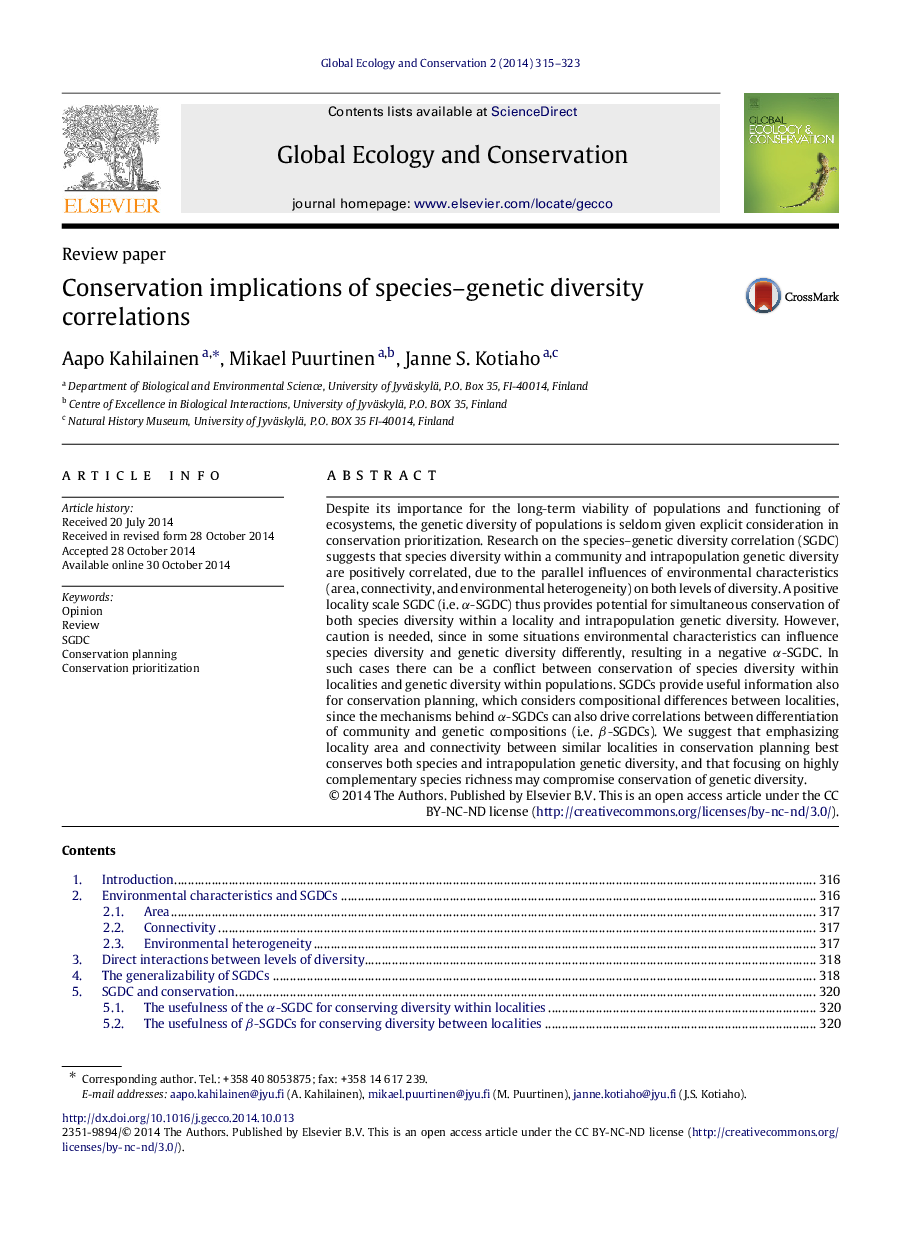| Article ID | Journal | Published Year | Pages | File Type |
|---|---|---|---|---|
| 4379693 | Global Ecology and Conservation | 2014 | 9 Pages |
Despite its importance for the long-term viability of populations and functioning of ecosystems, the genetic diversity of populations is seldom given explicit consideration in conservation prioritization. Research on the species–genetic diversity correlation (SGDC) suggests that species diversity within a community and intrapopulation genetic diversity are positively correlated, due to the parallel influences of environmental characteristics (area, connectivity, and environmental heterogeneity) on both levels of diversity. A positive locality scale SGDC (i.e. αα-SGDC) thus provides potential for simultaneous conservation of both species diversity within a locality and intrapopulation genetic diversity. However, caution is needed, since in some situations environmental characteristics can influence species diversity and genetic diversity differently, resulting in a negative αα-SGDC. In such cases there can be a conflict between conservation of species diversity within localities and genetic diversity within populations. SGDCs provide useful information also for conservation planning, which considers compositional differences between localities, since the mechanisms behind αα-SGDCs can also drive correlations between differentiation of community and genetic compositions (i.e. ββ-SGDCs). We suggest that emphasizing locality area and connectivity between similar localities in conservation planning best conserves both species and intrapopulation genetic diversity, and that focusing on highly complementary species richness may compromise conservation of genetic diversity.
